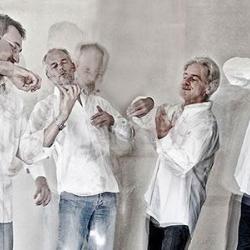
Place:
Scuola Normale Superiore
Start date:
End date:
FRANZ JOSEPH Haydn (Rohrau, 1732 - Vienna, 1809)
TEXTS BY VALERIO Magrelli
Introduction - Majestic and slowly
Sonata I - Pater, dimitte illis quie nesciunt quid faciunt - Largo Sonata II - Hodie mecum eris in Paradiso - Serious and Cantabile Sonata III - Mulier, ecce filius tuus - Serious
Sonata IV - Deus meus, Deus meus, utquid dereliquisti me? - Wide
Sonata V - Sitio - Adagio
Sonata VI - Consummatum est - Lento
Sonata VII - In manus tuas, Domine, commendo spiritum meum - Largo
The earthquake - Soon and with full force
The concert will be preceded by an introductory introductory lesson scheduled for Monday, March 26 at 6 pm in the Sala Azzurra of the Scuola Normale Superiore.
In 1786 Franz Joseph Haydn received a request from a Canon of Cadiz, in southern Spain, to compose a music to be performed during the Good Friday ceremonies. The instrumental music is born over the last 7 words of our Redeemer on the cross or Seven Sonatas with an introduction and at the end an Hob Earthquake: XX: 1 in the original version for orchestra. Haydn has always considered this composition as one of his best works, so as to induce him, to meet the needs of amateurs who were not able to dispose of the necessary orchestra, to prepare in 1787 a transcription for string quartet Hob: XX: 2, and a reduction for piano Hob: XX: 3 and finally, in 1796, a version for chorus and orchestra Hob: XX: 4 on the text of a canon of Passau. The best presentation of this passage is due to Haydn himself who, in sending the score to Breitkopf & Härtel for publication, attached the following preface: "About fifteen years ago I was asked by a canon of Cadiz to compose music for Le last seven words of our Savior on the cross. In the cathedral of Cadiz it was tradition to produce an oratory for Lent every year, in which the music had to take into account the following circumstances. The walls, the windows, the pillars of the church were covered with black drapes and only a large lamp hanging from the center of the ceiling broke that solemn darkness. At noon the doors were closed and the ceremony began. After a brief function the bishop went up to the pulpit and pronounced the first of the seven words (or phrases) with a speech about it. After that he descended from the pulpit and prostrated himself before the altar. This time interval was filled with music. In the same way the bishop then pronounced the second word, then the third and so on, and the music followed the end of each speech. The music composed by me had to adapt to these circumstances and it was not easy to write seven Adagi ten minutes each without boring listeners: to tell the truth, it was almost impossible for me to respect the established limits ». The composition, whose first performance presumably took place on Good Friday in 1786, is divided into seven sonatas in slow time that meditate on the last phrases pronounced by Christ on the cross, preceded by a majestic introduction and concluded with a Presto describing the earthquake that shocked Calvary as the Gospel of Matthew recounts. When the publisher Artaria published the work, Haydn had at the beginning of each sonata the text of the seven words under the part of the first violin, to focus the performers on the content of what they play.
Moni Ovadia was born in Plovdiv, Bulgaria in 1946, from a Jewish-Sephardic family. After his university studies and a degree in political science, he started his career as an artist as a researcher, singer and performer of ethnic and popular music from various countries. In 1984 he began his approach to the theater, first in collaboration with international artists such as Bolek Polivka, Tadeusz Kantor, Franco Parenti and then gradually proposing himself as creator, director, actor and director of an absolutely unique musical theater. The conducting thread of his shows and of his vast record and book production is the composite and multifaceted tradition, the cultural and real wandering typical of the Jewish people, of which he feels son and representative, that continuous immersion in languages and different sounds inherited from a culture that the dictatorships and totalitarian ideologies of the twentieth century would have wished to erase and which is remembered for the future.